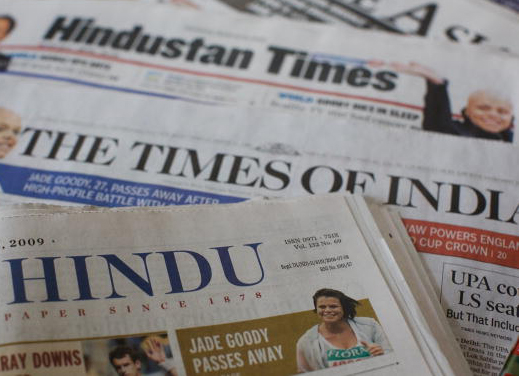
Countering China: Vietnam offers five blocks to India on nomination basis
A week after roping in Russia to invest in oil and gas blocks, Hanoi has offered India five exploratory blocks to ensure New Delhi's presence in countering China's enormous economic influence and territorial claims on Vietnam. The blocks — 17, 41, 43, 10 & 11-1 and 102 & 106/10 — have been offered on nomination basis whereby India's ONGC Videsh Ltd would not have to go through a bidding round of offering the best production sharing contracts to win the blocks. An MoU has been signed between both nations during Vietnamese Communist Party general secretary Nguyen Phu Trong's four-day visit which started on Wednesday. The block holds four trillion cubic feet of natural gas. OVL sources said that the exploratory blocks given on nomination basis were not located in the disputed waters where Beijing and Hanoi are battling overlapping sovereignty claims. Hanoi is targeting Russia, India and Japan to counter pressure from China as their presence would serve as a deterrent. Vietnam claims the water body to be its East Sea. OVL relinquished Block 127 in offshore Phu Khanh Basin as the well B127-NT-1X was found dry. It plans to withdraw from adjacent 128 which is under extended exploration phase-1 until June 15, 2014.
(Source: Indian Express)
India can be dragged to WTO if 'peace clause' ratified
Owing to the impending elections, India might buckle under pressure from farmers and civil society groups that have warned negotiators against any trade-off on the controversial ‘peace clause’ under the World Trade Organization (WTO)’s food security agreement. The clause will not guarantee any protection to India from being dragged into trade disputes by developed countries. While the WTO is ready to offer this as an interim measure, there is a catch: While developing countries can provide WTO-prohibited subsidies to farmers without inviting any dispute under the Agreement on Agriculture, rich countries will have the right to drag these countries to the WTO Disputes Settlement Body, under the Agreement on Subsidies and Countervailing Measures. This would render the peace clause null-and-void, sources told Business Standard on condition of anonymity. The government seems to be divided over the issue. While some senior officials want India to agree to the offer so as to not to be seen as spoiling the talks, others want India to put its foot down on the matter, as any such trade-off would impact the livelihood of 600 million farmers.
(Source: Business Standard)
Finance Ministry working on DTC Bill, may bring it in winter session
Finance Ministry said its finalising the official amendments to Direct Taxes Code (DTC) Bill so that it could be taken up in the Winter Session of Parliament beginning December 5. Among other things, the DTC Bill proposes a higher income tax rate of 35 per cent. While the Bill proposes to keep exemption limit at Rs 200,000 for individual tax unchanged, it proposes to introduce a fourth slab of 35 per cent tax rate for those with an annual income of over Rs 100,000,000 crore. It also proposes to levy a 10 per cent tax on dividend income of more than Rs 10,000,000. Besides, Minimum Alternate Tax (MAT) may be levied on book profit and not on gross assets, sources said. Further, the Securities Transaction Tax (STT) is likely to be retained, though the Standing Committee on Finance, which had scrutinised the bill, had suggested abolition of the levy. At present, tax is levied on income between Rs 200,000-500,000 at 10 per cent, Rs 500,000-1,000,000 at 20 per cent, and above Rs 10,000,000 at 30 per cent. Further, those earning more than Rs 10,000,000 have to pay a surcharge of 10 per cent. The DTC bill, which aims to rationalise tax rates to bring more people and companies under the tax net and overhaul the I-T Act of 1961, was introduced in Parliament in 2010.
(Source: Economic Times)
Agricultural shipments take a larger bite of exports pie
Thanks to a relatively stable export policy and a flourishing food processing/packaging industry, India’s agricultural exports have surged since 2010-11, enabling it to acquire a larger share of the country’s overall exports. From less than a 7% share in overall exports in 2010-11, the share of exports of “agricultural and processed food products” rose to 10.6% in 2012-13. That figure has more or less been maintained for the current year. India’s overall exports in the first two quarters of the current fiscal grew by 17%. This has been mainly achieved through a sharp rise in rice (both Basmati and non-Basmati varieties) and meat products during the first half of the current fiscal. The country is all set to see a repeat of the 2011and 2012 target of 10 million tonnes of rice exports this year as well. In the last two years, India emerged as the world’s biggest exporter of rice, displacing traditional exporters like Thailand and Vietnam. Indian agriculture seems to have a greater comparative trade advantage than manufactured goods. This has been possible as the sector has responded by undergoing a structural transformation
(Source: Financial Express)
Economic Section
Royal Thai Embassy















